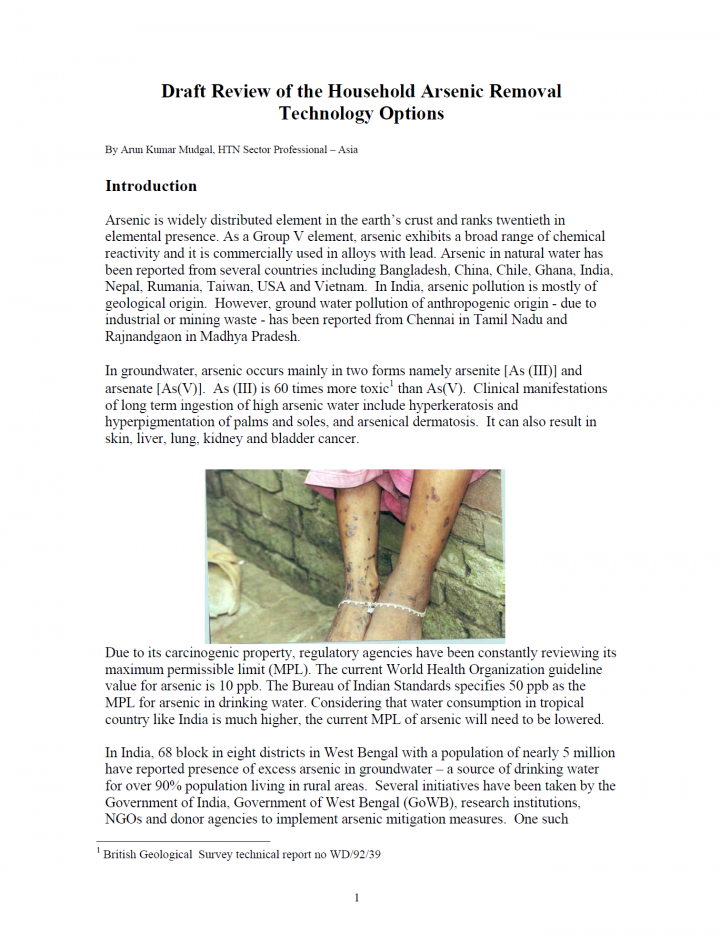Draft Review of the Household Arsenic Removal Technology Options Mudgal, A. K. (2002)
Arsenic is widely distributed element in the earth’s crust and ranks twentieth in elemental presence. As a Group V element, arsenic exhibits a broad range of chemical reactivity and it is commercially used in alloys with lead. Arsenic in natural water has been reported from several countries including Bangladesh, China, Chile, Ghana, India, Nepal, Rumania, Taiwan, USA and Vietnam. In India, arsenic pollution is mostly of geological origin. However, ground water pollution of anthropogenic origin - due to industrial or mining waste - has been reported from Chennai in Tamil Nadu and Rajnandgaon in Madhya Pradesh.
In groundwater, arsenic occurs mainly in two forms namely arsenite [As (III)] and arsenate [As(V)]. As (III) is 60 times more toxic1 than As(V). Clinical manifestations of long term ingestion of high arsenic water include hyperkeratosis and hyperpigmentation of palms and soles, and arsenical dermatosis. It can also result in skin, liver, lung, kidney and bladder cancer.
In villages where most groundwater sources are polluted by high arsenic, it will be essential to provide alternate water supply options. These options may include use of a distant safe source, drilling of a deep tubewell to exploit deeper aquifer, roof based rain water harvesting, roughing filter combined with slow sand filtration to use pond water, use of pond water after filtration and boiling or chlorination and arsenic removal plants (community or household). This desk review covers the currently available household based arsenic removal technologies including construction, treatment process, performance, O&M, capital and recurring costs, user friendliness and sustainability in rural areas.
Bibliographic information
Mudgal, A. K. (2002). Draft Review of the Household Arsenic Removal Technology Options RWSN
Filter / Tags
OtherPoliticians and local decision makersPractitionersCase studies in other formatsEnglish

